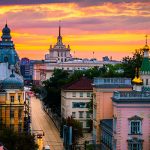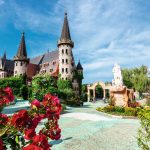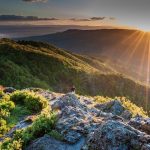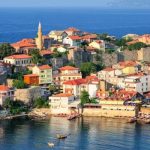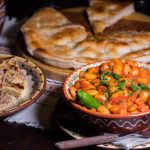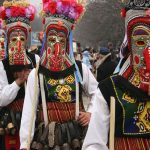Whispers of history emanate from Bulgaria’s fortresses and ruins. Caves secreted in Bulgaria’s river-sculpted wilds hold traces of Neolithic settlements. The mysterious Thracians left behind dazzling hauls of gold and silver, and tombs that can be explored to this day. The Romans built cities of breathtaking scale, the bathhouses, walls and amphitheatres of which sit nonchalantly in the midst of modern cities such as Varna and Plovdiv. Successions of tsars strutted along the ramparts of Tsarevets Fortress at former capital Veliko Târnovo. And these histories are no less relevant today, with Thracian art and Bulgaria’s victory over the Ottomans continuing to inspire.
Money
The monetary unit in Bulgaria is the Bulgarian Lev (BGN). 1 Lev = 100 Stotinka.
There are many exchange bureaux in Bulgaria that normally accept major currencies. Check the rates of exchange before making a transaction. Where possible, change money in banks, large hotels, or exchange bureaux. Don’t use sellers on the street. There is a large network of ATMs that accept standard international credit and debit cards. Check with card provider whether you will be able to use these machines to with draw Leva
Eating and Drinking
Bulgarian food is fairly loyal to its roots as the mountainous country hasn’t had a great number of foreign influences nor has it adopted many of those that arrived. Even today much of the cuisine is based on local fruits, vegetables, dairy products, and grilled meats. Even cooking techniques are generally traditional as grilling and slow boiling or heating foods in a single pot remains common. The greatest outside influences have come from the Greeks, Turks, and other Slavic groups. Of these, the Turks have the most noticeable influence as many Turkish desserts were introduced during Ottoman Turkish occupation and remain on menus today.
Bulgaria offers soft drinks, juices, milk, and any other non-alcoholic drink one desires, but none that are especially local or unique. Coffee is perhaps the most common pleasure of the people in the morning or with desserts.
The country’s pride comes in the form of wine and they produce a shockingly large amount of wine each year, generally helping supply the Russian and Eastern European markets. Some of the more local varietals include ‘red plonk’, ‘dimyat’, and ‘misket’, although more well-known varietals like merlot and riesling are also common. Despite the wine industry, the national drink is still considered rakia, which is a distilled liquor similar to brandy, which is generally distilled from plums or grapes, but can be produced from just about any fruit. A couple other local specialties are rosaliika (a rose-colored liquor) and mastika (aniseed liquor similar to ouzo). Local breweries are also growing in popularity and all popular international drinks are also available, including beers, wines, and hard liquors.
Tipping
You should tip about 10% of the bill for good service. Some restaurants might include service on the bill though so you should check first and make sure it goes to the staff. It is very common to tip hotel and maids in Bulgaria. You should tip 1.50 BGN per bag and the maid about 1 BGN a night. Tipping guides at the end of excursions and treks etc is always appreciated and your tour leader will advise you on the amount for this.
Australia Government Travel Advice
The Australian Government provides up to date information on the safety of travelling to various countries, and all travellers should take note of this advice. Liberty Tours recommends that all travellers take out appropriate Travel Insurance to cover the entire duration of their absence from home. Liberty Tours can assist with obtaining Travel Insurance.
Follow this link for current official assessment:
https://www.smartraveller.gov.au/destinations/europe/bulgaria
Advice on health risks and vaccination recommendations can also be found using the same link.
Weather
Bulgaria has a temperate climate, with cold winters and hot summers. The barrier effect of the Balkan Mountains has some influence on the climate throughout the country: northern Bulgaria experiences lower temperatures and receives more rain than the southern lowlands.
What to pack
In winter: bring warm clothes, such as a sweater, a down jacket, a hat, gloves, a scarf, and a raincoat or umbrella.
In summer: bring light clothes, a T-shirt, but also long pants, a light jacket and a sweatshirt for the evening, and an umbrella.

